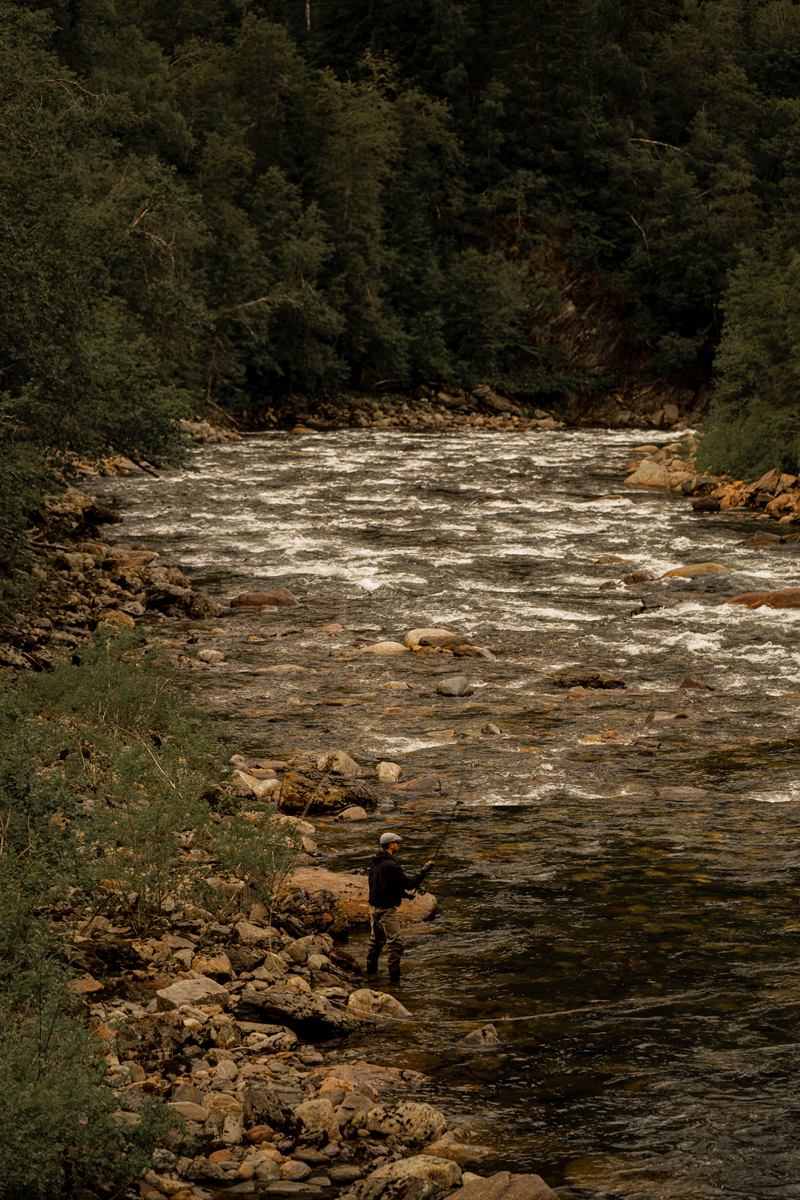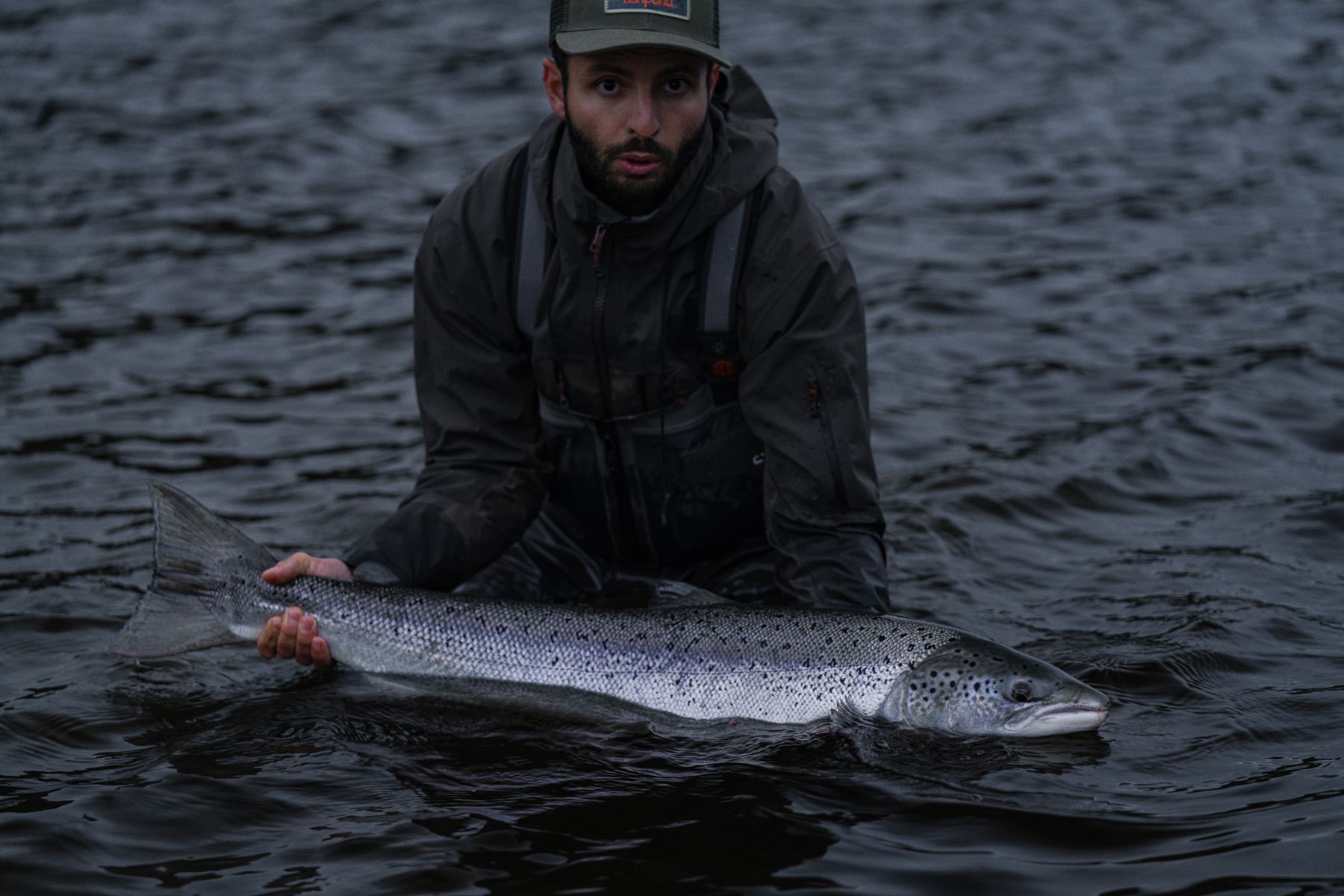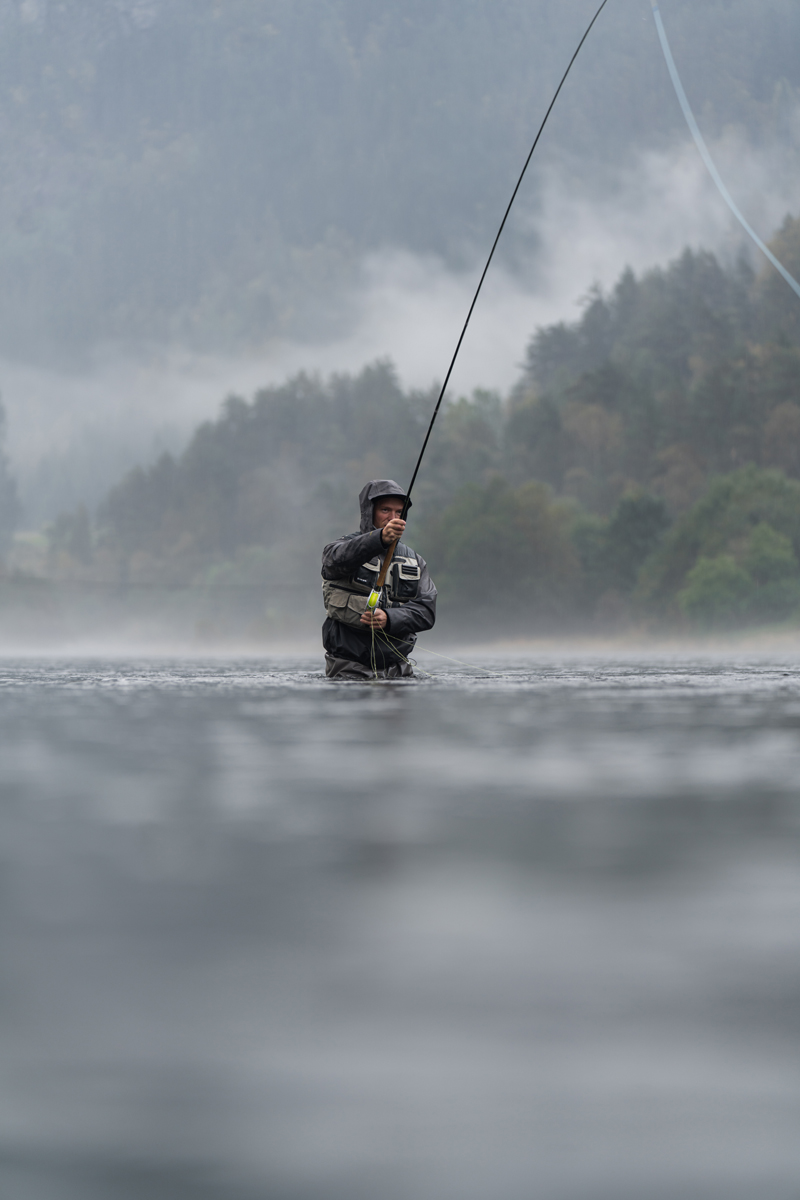
8 minute read
Ahed El-Najar: Cracking the Norwegian Salmon Code
AHED EL-NAJAR: Cracking the Norwegian Salmon Code
Due to the COVID-19 pandemic, he shelved all his international plans and instead decided to spend the entire summer fishing for salmon in his home country, Norway. This led to some impressive catches for Ahed El-Najar.
By THE EDITORIAL STAFF // Photos by AHED EL-NAJAR, EIRIK NIELSEN, MATT HARRIS, TORBJØRN TILTNES and NILS PETTER STENSRUD

Ahed El-Najar, an avid trout angler with a penchant for New Zealand dry fly fishing, has quickly made a name for himself in Norwegian salmon fly fishing circles. Especially the fish he caught while spending time on various Norwegian rivers amidst the COVID year of 2020 are nothing short of sensational. With nearly two salmon per day over 45 fishing days, 13 salmon over 10 kg, and a record-breaking 20 kg salmon, it’s no surprise that many anglers, are curious about Ahed’s approach to catching salmon. Catches of this caliber are far from common — so when we had the chance to ask Ahed about his stellar season, we didn’t hesitate for a second.
The person we encountered, an outgoing down-to-earth personal trainer, osteopath, and Oslo resident is still relatively new to fly fishing. With just five seasons of fly fishing under his belt, he has become entirely consumed by his new passion, and his zeal and dedication undoubtedly contribute to his success as a salmon fly fisherman. Thankfully, the success hasn’t gone to his head. He generously shares his experiences and insights, and we eagerly take notes.

Can you tell us about the circumstances surrounding the 2020 season: why you took up salmon fishing, and what made your efforts possible?
“I started fishing for salmon because of the COVID-19 restrictions, which prevented me from fishing abroad. In January 2020, I was in New Zealand and returned on January 14. I then traveled to Belize to fish for permit, bonefish, and tarpon.
When I returned, COVID-19 shut everything down, and I lost my job from March to August.
Instead of wallowing in the situation, I decided to make the best of it and fully commit to Norway and salmon fishing. After fishing for seatrout on the coast throughout spring, I began my salmon season in June.”

What was the result of your efforts?
“The season amounted to 45 days of salmon fishing, landing a total of 87 salmon. Thirteen of these were over 10 kg, with four between 13 and 15 kg, and one was a magical 20 kg.”
What was the biggest moment of the season?
“The biggest moment was definitely catching the 20 kg salmon, a fish I never dared dream of. My good friend Martin also caught a 10.5 kg seatrout just five minutes before I hooked my record salmon. It was a shared dream come true for both of us.”

What kind of research did you do before the season?
“I chose fishing spots and rivers based on availability. Due to COVID, there were few foreign anglers, allowing me more freedom to improvise and move around based on water levels and weather. This flexibility meant that my friends and I often hit the right conditions.”
How did you approach the season and the way it progressed?
“I began the season with a trip to the Orkla River from June 13–15, landing a silver salmon that gave me the confidence to continue.
I fished with three skilled friends, and the trip was mostly about learning from them. That weekend, my friends landed three salmon at 10 kg, 8 kg, and 6 kg. That made me determined to return, and a spontaneous trip the following weekend resulted in two more salmon at 2 and 8 kg.
That kick-started the rest of my journey!


I then traveled with friends to Jølstra and back to Orkla and Gaula, where I caught my first 10 kg salmon and a 15 kg one (on the Orkla). In Gaula, I landed fish at 11.5 kg and 13 kg.
After that, I headed to Northern Norway to fish both salmon and trout in the famous Reisa and Vestre Jakob rivers, where I caught some fantastic fish.”

What was the most important lesson of the season?
“I learned a lot from the talented people around me. Being humble and taking in tips and tricks from seasoned anglers was key to my success.
I learned that salmon fishing is heavily based on variation: of retrieve, casting angle, flies, lines, and leader lengths. Because I wasn’t bound by tradition, I often tried things others wouldn’t dare and experimented — a strategy that paid off.”


Have you improved as a salmon fly angler over the season?
“Preparation is vital in everything. During the 2020-season, I was quite fresh, and my gear was limited. This has changed, and I’m now well-prepared for the coming season. For example, you can never have too many hooks or flies, and having a spare shooting line is crucial!
I’ve already checked my backing, shooting line, and tips and purchased new 13.6’ and 12.6’ double-handed rods, plus single-hand rods I’ll use as water levels drop. The most valuable skill I learned was casting effectively with double-handed rods, regardless of the weather.”


Do you do anything differently from traditional salmon fly anglers?
“I always aim to do something different from the angler who fished before me. Often, I think, ‘Why didn’t he catch fish?’ Then it’s my job to try something different. It’s also essential to work as a team with friends; plan which lines, flies, etc., to use on the first, second, and third passes.”
What advice do you have for beginners wanting to try salmon fly fishing in Norway?
“My first tip is to take a casting course with double-handed rods— it’s so essential! If you can join a salmon fishing school, that’s also a good idea. Also, consider buying an all-around rod suited to the rivers you’ll fish.
Sites like www.inatur.no have plenty of excellent Norwegian salmon fishing spots, and my two largest fish were caught on day passes that cost just 300 NOK and 500 NOK. Fish with people you know and like, and have a shared plan—salmon fishing is a gentleman’s sport and a team effort.”


How to Time Your Fishing?
“If you plan well in advance, book your fishing either at the start of the season (in June) or towards the end of it (in August). Early in the season, the fish are usually fresh, aggressive, and willing to
strike, while mid-season, they tend to be harder to catch. Towards the end of the season, as fish numbers accumulate, they become easier to approach as they grow stressed, aggressive, and territorial. However, I would generally recommend early fishing, as the fish at that time still have some urge to strike and have not yet been heavily fished.
If, on the other hand, you have the flexibility to plan more spontaneously, simply keep an eye on salmon stock reports, weather forecasts, and flood reports, and move around as needed”.

Do You Have Any Tips for Online Resources to Help Get Familiar with Salmon Fishing Opportunities in Norway?
“I primarily used inatur.no and elvguiden.no to book fishing spots. I’ve also asked people on Facebook and Instagram for advice.
It never hurts to ask for tips!”
Basic Equipment for Norway
For early-season fishing in flood rivers, Ahed recommends 1415’ rods in #9-10 weights. Heavy sinking lines, sinking tips, short leaders, and large flies are essential for success at this stage. Ahed himself fishes with a 14’ 9-weight rod and transitions over the season to lighter gear, lighter lines, longer leaders, and smaller flies.
As the season progresses, he also uses a 9.6’ #7 single-hand rod and floating lines, combined with hitch flies, bombers, and weighted nymphs fished upstream.
Remember to disinfect your gear to prevent the spread of fish diseases or ecological contamination (disinfection stations are found at most fishing spots) and purchase a national fishing license.
It can be ordered online: www.environmentagency.no/areas-of-activity/hunting-and-fishing/rules-for-recreational-fishing-in-rivers-andlakes/national-fishing-fee/













